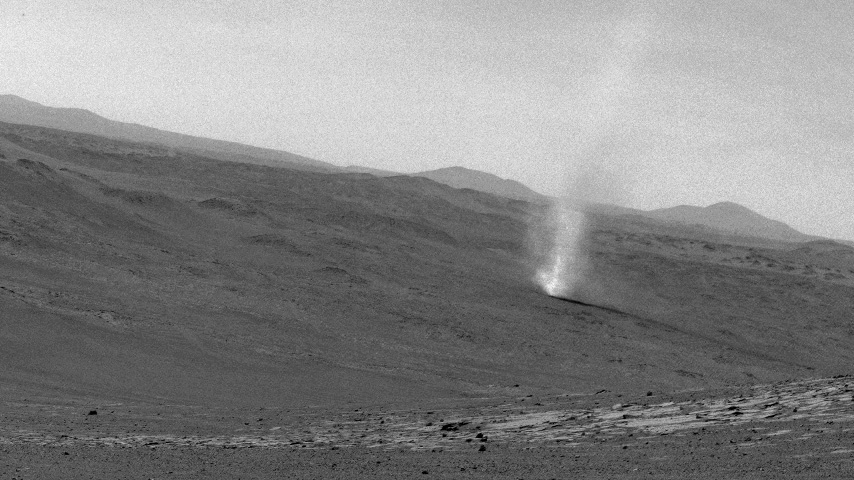Cassini is currently orbiting Saturn with a period of 18.9 days in a plane inclined 0.4 degree from the planet's equatorial plane. The most recent spacecraft tracking and telemetry data were obtained on June 10 using one of the 34-meter diameter Deep Space Network stations in Australia. The spacecraft continues to be in an excellent state of health with all of its subsystems operating normally except for the instrument issues described at http://saturn.jpl.nasa.gov/news/significantevents/anomalies .
Cassini's observations this week fell under the category of cross-discipline science investigations. This is one of six categories designated to facilitate construction of the 10-week-long command sequences that control the spacecraft. The other categories are Saturn, Rings, Magnetospheres, Titan, and Icy Satellites. On-board, the S89 command sequence orchestrated Cassini's activities this week, while work progressed on S90, which will take control in July, on S91 that starts in September, and S92 for November.
Wednesday, June 3 (DOY 154)
The first close-up investigations Cassini made of Saturn's odd, 270-kilometer-long moon Hyperion, in September 2005, showed it to have a spongy appearance and a mean density lower than that of water. Today, NASA's Astronomy Picture of the Day featured one of the images Cassini took during its final visit to Hyperion last month:
http://apod.nasa.gov/apod/ap150603.html.
Thursday, June 4 (DOY 155)
The Imaging Science Subsystem (ISS), the Composite Infrared Spectrometer (CIRS), and the Visible and Infrared Mapping Spectrometer (VIMS) spent 90 minutes monitoring Saturn's largest moon Titan and its atmospheric features from a distance of 1.9 million kilometers. When that was finished, ISS had the spacecraft turn and track Saturn's faint G ring for nearly 11.5 hours while CIRS, VIMS and the Ultraviolet Imaging Spectrograph (UVIS) took data while riding along. Since the plane of Cassini's orbit is nearly aligned with Saturn's equatorial ring plane, this was a low-elevation observation. The ring was sunlit at a high phase angle -- meaning it was lit from nearly behind the ring. Both before and again after this observation, ISS turned to Saturn and carried out storm-watch observations lasting two minutes each.
Friday, June 5 (DOY 156)
The Cosmic Dust Analyzer (CDA) embarked on a series of observations of dust streams related to Saturn. These can be undertaken when the spacecraft is at the desired distance from the planet and maintaining a relatively stable orientation (instead of constantly turning to point the telescopes). The CDA team's goal is to detect Saturn’s rotation period and other periods in dust stream data. The observation lasted 17.75 hours.
Saturday, June 6 (DOY 157)
CDA spent 11.5 hours observing the Saturnian dust stream today.
Sunday, June 7 (DOY 158)
While CDA collected dust, Cassini coasted through apoapsis. This marked the start of its orbit #217 of Saturn. The spacecraft reached a distance of 2.49 million kilometers from the planet, and slowed to 6,000 kilometers per hour relative to it; this was just about one-10th its speed at periapsis last week.
After taking care of some engineering activities, and a session with the DSN for two-way digital communications and radiometric tracking, CDA started another Saturn dust stream observation. This one lasted 13 hours.
Monday, June 8 (DOY 159)
Giovanni Domenico Cassini the astronomer was born this day 390 years ago in Italy. Having later acquired French citizenship, Jean Dominique Cassini served as the first director of the Paris Observatory. Among his many discoveries was the division between Saturn's A ring and B ring which now bears his name, as does the orbiting robot. One telescope he used to study Saturn was an open-air design, consisting of a lens suspended from a tower and steered with a long rod attached to an eyepiece.
Based on the latest tracking data from the Deep Space Network (DSN), Cassini the spacecraft was commanded to perform Orbit Trim Maneuver (OTM)-411 while still close to apoapsis. The 58-second firing of its small hydrazine-fed rocket thrusters provided a change in velocity of 60 millimeters per second, targeting for a June 16 flyby of Saturn's 1,123-kilometer-diameter icy moon Dione.
An image featured today shows that the surface of Saturn's 1,062-kilometer wide moon Tethys (which Cassini the astronomer discovered in 1684, the same year he discovered Dione) is carpeted with craters of virtually every size:
/resources/16197 .
Tuesday, June 9 (DOY 160)
ISS led CIRS and VIMS in another 90-minute Titan monitoring observation from about the same distance as Thursday's. Then, after a quick ISS storm watch, CIRS took control of pointing Cassini's telescopes to make an 11-hour observation of Saturn’s atmosphere, measuring its composition. ISS and VIMS rode along.
During the past week, the DSN communicated with and tracked Cassini on 12 occasions, using stations in California and Australia. A total of 143 individual commands were uplinked, and about 1,400 megabytes of telemetry data were downlinked and captured at rates as high as 142,201 bits per second.
Milestones spanning the whole orbital tour are listed here: http://saturn.jpl.nasa.gov/mission/saturntourdates .
Information on the present position and speed of the Cassini spacecraft may be found on the "Present Position" page at:
http://saturn.jpl.nasa.gov/mission/presentposition/ .
This illustration shows Cassini's position on June 9: https://space.jpl.nasa.gov/cgi-bin/wspace?tbody=-82&vbody=1001&month=6&day=9&year=2015&hour=23&minute=55&fovmul=1&rfov=45&bfov=30&brite=1&showsc=1&showac=1 .


































